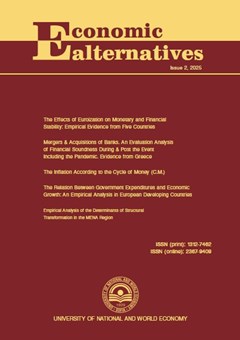Mergers & Acquisitions of Banks. An Evaluation Analysis of Financial Soundness During & Post the Event Including the Pandemic. Evidence from Greece
Authors: Kyriazopoulos Georgios, Kalomoiraki Konstantina
Abstract
The financial crisis of 2009, which invaded Greece essentially in 2010, brought about many changes in the Greek banking industry which were decisive. One of these decisive changes was the phenomenon of mergers and acquisitions which, when the year actually ended, created four Greek systemic banks. The purpose of this study is to evaluate the financial soundness of the four Greek systemic commercial banks using the CAMELS method from the beginning of the financial crisis in 2010 when all the acquisitions began. Our next purpose is to rank our sample of four Greek systemic banks that will be based upon the results generated from the implementation of CAMELS model before and after the end of the wave of acquisitions in the short- and long-term period until the beginning and during the pandemic in 2020. The year of the pandemic is considered a landmark year, as it significantly affected the financial results of Greek businesses. The event brought about an increase in the bad loans of the Greek systemic commercial banks, consequently reducing their financial strength. The study stops in the year 2020 due to the process concerning the conversion of the four Greek systemic banks into holding banking companies that started in 2021, continues and is expected to be completed at the end of 2023. The research questions of our study is if there was any improvement in financial soundness of the four Greek systemic commercial banks in a short- and long-term period and during the pandemic after they made all the acquisitions. Our findings show that there was no significant improvement of the financial soundness for the acquiring Greek systemic commercial banks. So we can assume that perhaps all these domestic acquisitions were made for some other purposes. We have to note that the basis of our analysis focuses on and is based on the principles of Basel Committee II and III. So our results were obtained during the wave of acquisitions based on the CAMELS model according to the principles of Basel Committee II. Our results in a short and long time period after the end of the domestic mergers and acquisitions are measured with the CAMELS model according to the principles of Basel Committee III.

